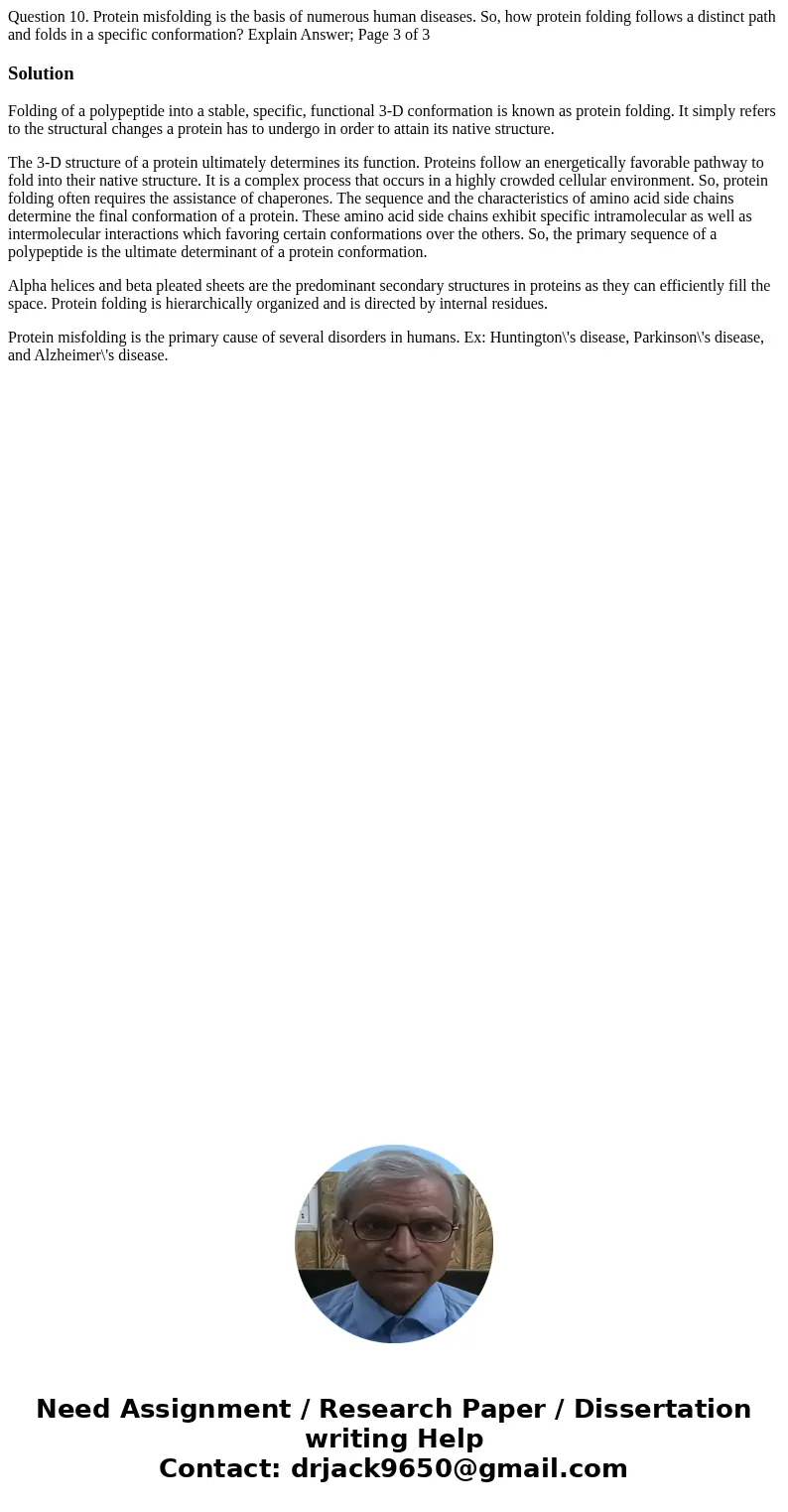Question 10 Protein misfolding is the basis of numerous huma
Solution
Folding of a polypeptide into a stable, specific, functional 3-D conformation is known as protein folding. It simply refers to the structural changes a protein has to undergo in order to attain its native structure.
The 3-D structure of a protein ultimately determines its function. Proteins follow an energetically favorable pathway to fold into their native structure. It is a complex process that occurs in a highly crowded cellular environment. So, protein folding often requires the assistance of chaperones. The sequence and the characteristics of amino acid side chains determine the final conformation of a protein. These amino acid side chains exhibit specific intramolecular as well as intermolecular interactions which favoring certain conformations over the others. So, the primary sequence of a polypeptide is the ultimate determinant of a protein conformation.
Alpha helices and beta pleated sheets are the predominant secondary structures in proteins as they can efficiently fill the space. Protein folding is hierarchically organized and is directed by internal residues.
Protein misfolding is the primary cause of several disorders in humans. Ex: Huntington\'s disease, Parkinson\'s disease, and Alzheimer\'s disease.

 Homework Sourse
Homework Sourse